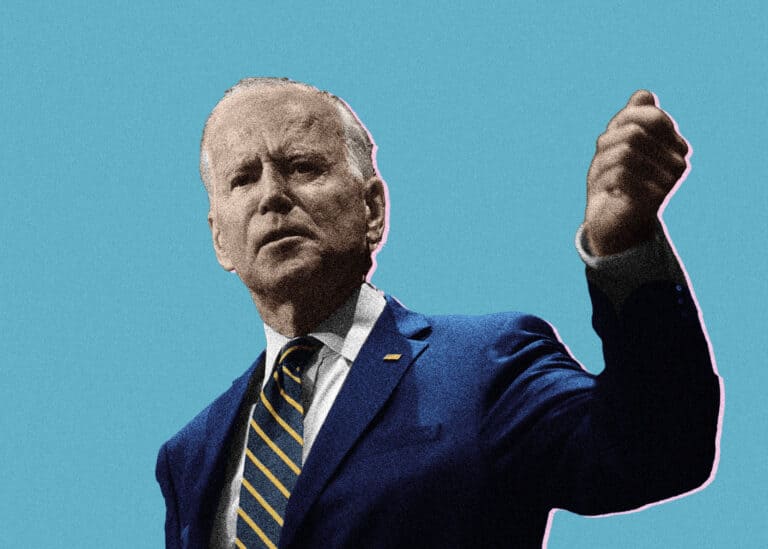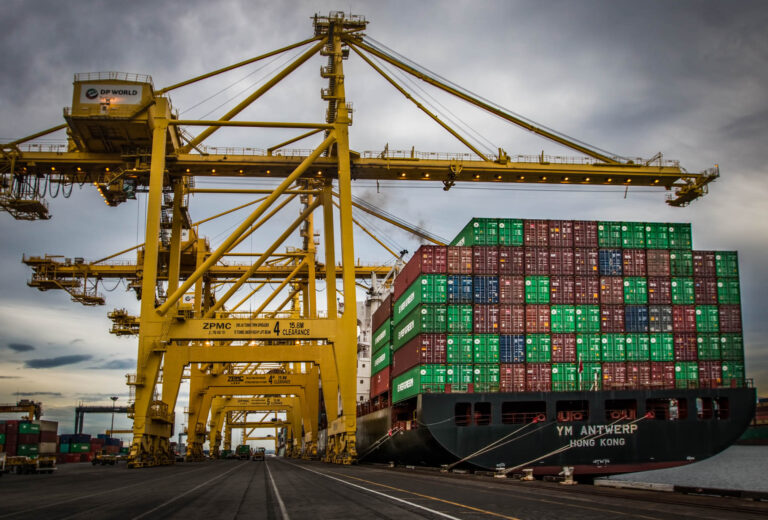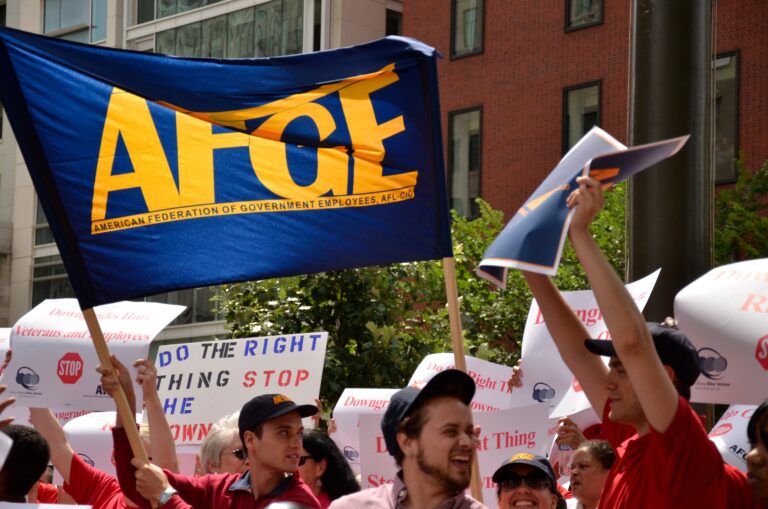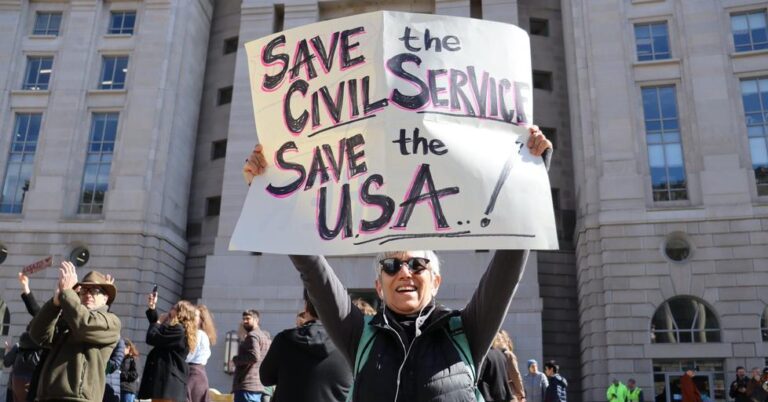
Dr. David Doorey is a Professor of Labor and Employment Law at York University in Toronto.
President Biden, the self-proclaimed “proud pro-labor President,” has asked Congress to legislatively impose a new contract on railway workers this week to avoid a potential strike. The tolerance threshold for strikes that disrupt key services is a point where rubber hits the road for politicians who talk-the-talk on labor rights. Support in principle for strong labor protections can quickly give way to the pressures of pragmatic governance. A similar showdown occurred this month in Ontario when the government imposed a collective agreement on educational workers and banned them from striking. However, that story had a surprise ending that offers lessons on the relationship between law and power in labor law.
The Constitutional Backstory
In Canada, the range of legislative responses to strikes in key sectors is complicated by the Charter of Rights and Freedoms, which protects freedom of association (FOA), including a right to collective bargaining and to strike. This means that governments cannot legislatively prohibit workers from striking or impose collective agreements on workers unless the government can persuade a court that these restrictions on workers’ FOA are justified to deal with a pressing and substantial public concern and that there is no less intrusive way to address the problem. This balancing test that permits governments to override citizens’ fundamental freedoms appears in Section 1 of the Charter.
Another section of the Charter permits a government to override fundamental freedoms entirely. The “notwithstanding clause” (Section 33 of the Charter) was added to the Charter as a compromise to obtain unanimous provincial support for the Charter. The thinking then was that the notwithstanding clause would be used rarely and only in emergencies since voters would not tolerate the override of their fundamental freedoms. It certainly was not anticipated that a government would ever use the constitutional override section as a collective bargaining device to impose contracts on workers.
The scope of FOA under the Canadian Charter evolved over several decades. In cases decided between 1987 and 1990, the Supreme Court of Canada (SCC) read down FOA to mean little more than a right of workers to combine without government interference. Governments could no longer prohibit people from forming or joining unions, but the SCC ruled that FOA protected neither a right to engage in collective bargaining or a right to strike. However, beginning in 2001, the SCC embarked on a two-decade-long expansion of its narrow interpretation of FOA. The transformation began with the important decisions in Dunmore v. Ontario (2001) and B.C. Health Services(2007), which concluded that FOA protects a limited right to engage in a process of collective bargaining. The evolution continued through a series of cases culminating in the SCC’s 2015 decision in Saskatchewan Federation of Labour v. Saskatchewan, which ruled that FOA protects a limited right to strike.
The SCC was careful to clarify that FOA does not constitutionalize any particular labor relations model, such as the Wagner model. However, the effect of the SCC’s FOA jurisprudence has been to codify the expectations of the parties that the postwar labor relations compromise will be respected. That compromise consists of an agreement by labor to respect the tight restrictions on the legal right to strike under Canadian labor law in exchange for the government’s promise to ensure employers bargain in good faith and that strikers are protected from reprisals when they engage in “lawful” strikes. The legitimacy of the model relies on the government’s capacity and willingness to maintain this fragile compromise.
The Recent Battle of Ontario Education Workers
That is the constitutional backdrop for the dramatic events that took place in Ontario earlier this month involving 55,000 educational-support workers employed in the province’s public-school system and represented by the Canadian Union of Public Employees (CUPE). A collective agreement between CUPE and Ontario’s public-school boards expired in summer 2022, and bargaining for a renewal agreement proceeded into the fall. Canadian labor law requires that several prerequisites be satisfied before workers can lawfully strike, all of which were met by the end of October. The last of these prerequisites was that CUPE provide a 5-day notice of the commencement of a lawful strike. That notice was given on October 30, setting the stage for a potential strike beginning on Friday, November 4. The school boards announced that schools would be closed to students for the duration of the labour dispute.
So far in this story, nothing was out of the ordinary. Unions regularly give notice of a strike, which motivates the parties to get serious in negotiations to avoid a work stoppage. However, there were immediate signs that the Ontario government, led by the right-wing Conservatives, did not intend to respect the usual process. The day after CUPE gave its strike notice, the Minister of Education announced that the government would no longer negotiate with CUPE unless the union and its members promised not to exercise their legal right to strike. That position almost certainly violated the statutory duty to bargain in good faith found in Canadian labor legislation. Then the Minister went a step further and stated that the government would “not accept” a strike by these workers.
In making these statements, the government signaled its intention to ignore the Charter’s protection of FOA as well as the historical compromise upon which Canada’s labor relations model depends. On October 31, the government introduced Bill 28, Keeping Students in Class Act. That Bill imposed a new 4-year contract on the workers, banned the right of CUPE members to strike, and provided for huge fines on the union and workers if a strike occurred. And, to the shock of the Canadian labor movement, Bill 28 also invoked the “notwithstanding clause” to block CUPE from challenging the patently unconstitutional law.
Bill 28 provoked an immediate and strong response from the Canadian labor movement. CUPE defied the new law and announced that its members would not return to work until the government repealed Bill 28 and returned to the bargaining table. Many of Canada’s other public and private sector unions joined the CUPE protests and threatened a mass provincewide or even nationwide general strike. The government had seriously miscalculated. On Monday, November 7, after a two-day mass protest leading to school closures across the province, the government hastily announced that it would repeal Bill 28 and continue to negotiate with CUPE. This week, after the government improved its offer, the parties reached a tentative collective agreement that CUPE members are now voting on.
The Ontario government’s mistake was believing that it could renege on its side of the postwar labor relations compromise by banning the right to strike and imposing a contract and then expect that labor would subserviently continue to respect its side of the bargain. A government official later admitted that it had never crossed their minds that CUPE workers would ignore Bill 28 and strike anyways. This naivety demonstrates a poor grasp of Canadian labor-relations history and the fragile compromises that hold it together. Labor peace occurs not because law commands it but because workers either perceive that they lack power or agree not to exercise it. Education and railway workers have power. The interesting question is what stops them from exercising it.







Daily News & Commentary
Start your day with our roundup of the latest labor developments. See all
December 8
Private payrolls fall; NYC Council overrides mayoral veto on pay data; workers sue Starbucks.
December 7
Philadelphia transit workers indicate that a strike is imminent; a federal judge temporarily blocks State Department layoffs; and Virginia lawmakers consider legislation to repeal the state’s “right to work” law.
December 5
Netflix set to acquire Warner Bros., Gen Z men are the most pro-union generation in history, and lawmakers introduce the “No Robot Bosses Act.”
December 4
Unionized journalists win arbitration concerning AI, Starbucks challenges two NLRB rulings in the Fifth Circuit, and Philadelphia transit workers resume contract negotiations.
December 3
The Trump administration seeks to appeal a federal judge’s order that protects the CBAs of employees within the federal workforce; the U.S. Department of Labor launches an initiative to investigate violations of the H-1B visa program; and a union files a petition to form a bargaining unit for employees at the Met.
December 2
Fourth Circuit rejects broad reading of NLRA’s managerial exception; OPM cancels reduced tuition program for federal employees; Starbucks will pay $39 million for violating New York City’s Fair Workweek law; Mamdani and Sanders join striking baristas outside a Brooklyn Starbucks.